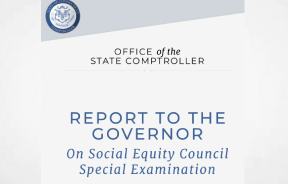Highlights
- We ran an experiment examining cigar and cannabis co-marketing on packages.
- Participants were US youth (ages 15–20) who used or were susceptible to cigars.
- Co-marketing led youth to think that products do not contain nicotine or tobacco.
- Co-marketing led to higher susceptibility to using the product shown.
Abstract
Significance
Cigars are sometimes marketed with cannabis references because they are often used for smoking blunts (i.e., cannabis rolled in cigar paper with or without tobacco). However, little research exists on the impact of cannabis co-marketing on cigar perceptions.
Methods
Participants included 506 US youth (ages 15–20) recruited April-June 2023 through Qualtrics who reported ever using little cigars or cigarillos (LCCs), past 30-day use of LCCs, or susceptibility to using LCCs. We then conducted a between-subjects experiment, randomizing youth to view one of two cigarillo packages: 1) a package with cannabis co-marketing (i.e., the package included a cannabis-related flavor descriptor and the word “blunt” appeared in the brand name and product label) or 2) a package with no cannabis co-marketing. We assessed the effects of the packaging on perceptions of product ingredients, addictiveness and harm perceptions, product appeal, susceptibility to using the product shown, and purchase intentions.
Results
Packages with cannabis co-marketing were perceived as more likely to contain cannabis (OR: 5.56, 95 % CI: 3.73, 8.27) and less likely to contain tobacco (OR: 0.42, 95 % CI: 0.25, 0.70) or nicotine (OR: 0.57, 95 % CI: 0.40, 0.82). Cannabis co-marketing also led to higher susceptibility to using the product shown (B: 0.21, p = 0.02). We did not find evidence that cannabis co-marketing changed harm perceptions or purchase intentions.
Conclusions
Among a sample of US youth, cannabis co-marketing on cigar packages may change perceptions of product ingredients and increase susceptibility to using such products, which could lead to the initiation of cigars and cannabis.
Introduction
In 2023, cigars were one of the most commonly used tobacco products among youth, with around 280,000 high school students reporting past 30-day cigar use (Birdsey, 2023). One of the most common ways in which young people use cigars is by removing some or all of the tobacco and replacing it with cannabis, often referred to as “blunts.” In a study of high school students, nearly two-thirds of youth who reported using cigars modified the cigars to make blunts (Trapl et al., 2018). Similarly, in a qualitative study of high school students, youth more commonly reported modifying cigarillos to smoke blunts than using unmodified cigarillos (Kong et al., 2017). Indeed, many young people explicitly report that cigarillos are purposefully made to be used as blunts (Giovenco, Miller Lo, Lewis, & Delnevo, 2017). Importantly, some people who use blunts also do not think of themselves as “cigar users” (C.D Delnevo, Bover-Manderski, & Hrywna, 2011) so some estimates of blunt use may be underreported if blunt use is only asked among those reporting cigar use.
Because blunts are smoked, the health risks associated with cigar and blunt use are likely similar to those of using combustible cannabis products and potentially other combustible tobacco products, like cigars. However, the harms of cannabis and tobacco co-use are largely unknown given challenges in measuring co-use and disentangling health effects between tobacco and cannabis. Nevertheless, blunts can expose people to nicotine even if tobacco filler is completely removed (Peters, Schauer, Rosenberry, & Pickworth, 2016) since the wrapper can contain tobacco. As such, blunt use is associated with both nicotine and cannabis dependence (Schauer, Rosenberry, & Peters, 2017). For youth, in particular, use of blunts is also associated with subsequent cigar use (Audrain-McGovern, Rodriguez, Alexander, Pianin, & Sterling, 2019) and other tobacco product use (e.g., cigarettes) (Fairman et al., 2023, Mayer et al., 2020).
Cigars are co-marketed with cannabis in different ways, including product descriptors connoting cannabis-related flavors (e.g., Cali Green, Kush, Purple Haze) and brand names (e.g., Swisher Sweets Blunts). For instance, in a study of tobacco retailers near middle and high schools in California, approximately 62 % of stores sold cigars with at least one form of cannabis co-marketing (Henriksen, Schleicher, Ababseh, Johnson, & Fortmann, 2018). In particular, 26.0 % of stores sold cigar products, such as blunt wraps and cigarillos, with a cannabis-related flavor and 27.2 % sold cigarillos marketed as blunts—either with the brand name or product label (e.g., Swisher Sweets Blunt) (Henriksen et al., 2018). In another study relying on 2016 sales data, almost 30 million cigars and 56 million cigar wraps sold in 2016 had cannabis co-marketing in the flavor and/or brand name (representing 4.3 % and 4.9% of the dollar and unit share, respectively, of the cigar market), and most that did have cannabis-related flavors also used cannabis terminology in the brand name (Delnevo, Giovenco, Kurti, & Al-Shujairi, 2020). Importantly, both of these studies revealed disparities in how and where cannabis co-marketing is displayed. Cannabis co-marketing was more prevalent in neighborhoods with a lower median household income (Henriksen et al., 2018), and cannabis-related flavored cigars were cheaper, on average, than cigars without cannabis-related flavors (Delnevo et al., 2020).
Cigars with cannabis co-marketing can be advertised anywhere in the US and are not restricted to those states where cannabis is legal. In particular, cigarillos, which are often used to make blunts and contain cannabis co-marketing, are most commonly purchased in convenience stores or gas stations (Edwards et al., 2023). Even in states where cannabis is legal, cannabis retailers often cannot sell tobacco products, such as cigars or cigar wraps. For instance, both Washington (Washington State Liquor and Cannabis Board, 2023) and California (Public Health Law Center, 2023) state law prohibit cannabis retailers from selling tobacco products and tobacco retailers from selling cannabis. Therefore, blunts are often not commercially sold in the US but cigars are still marketed with cannabis-related references. As such, cigars with cannabis co-marketing are subject to regulations from the Food and Drug Administration’s Center for Tobacco products, which has regulatory authority over tobacco products in the US.
While research has shown that cigar and cannabis co-use is common, no research to our knowledge has occurred on testing the impact of co-marketing on product packages among youth. As such, the goal of this study was to examine how cigar and cannabis co-marketing on packages is associated with product perceptions. We hypothesized that cigar and cannabis co-marketing would decrease perceptions of product harm and increase perceptions that the cigars contain cannabis, appeal, susceptibility to using the product shown, and purchase intentions. We also hypothesized significant interactions between co-marketing and blunt use, such that effects would be strongest among youth reporting blunt use.
Section snippets
Participants
This study was part of a parent study examining the impact of larger, pictorial cigar warning labels on perceived warning effectiveness. At the end of the parent study, we conducted this current experiment examining the impact of cannabis co-marketing on cigar packages. Participants were a sample of US youth (ages 15–20) recruited April through June 2023 from Qualtrics. A total of N=506 youth comprised the final sample, and the survey took a median of 14 min to complete. Eligible participants
Participant characteristics
The mean age of participants was 17.6 (SD: 1.6) and around half of participants reported being a man/boy (48.6 %) (Table 1). The majority of youth reported being white (54.0 %), followed by Black or African American (18.2 %). In addition, 26.7 % of youth reported being Hispanic/Latino. In terms of LCC status, 32 % reported use in the past 30 days, 20.6 % reported ever use of LCCs (but not use in the past 30 days), and 47.4 % were classified as susceptible to using LCCs. In terms of blunt use
Discussion
Our study with a sample of US youth found that cannabis co-marketing on cigar packages decreased youth’s perceptions that cigars contained nicotine or tobacco. Co-marketing also increased youth’s susceptibility to using the product shown, particularly among youth who were curious about using blunts but had reported never using blunts before. To our knowledge, this is the first study to experimentally examine how cannabis co-marketing on cigars may influence product perceptions. Our findings
Conclusions
Our study with a sample of US youth found that cannabis marketing on cigar packages may change perceptions of product ingredients and increase susceptibility to using the product shown, particularly among youth who are curious about using blunts.
Funding
Research reported in this publication was supported by the National Cancer Institute of the National Institutes of Health and the Food and Drug Administration Center for Tobacco Products under Award Number R01CA260822. The content is solely the responsibility of the authors and does not necessarily represent the official views of the National Institutes of Health or the Food and Drug Administration. MJ’s work on this paper was supported by the National Institute of Environmental Health Sciences
CRediT authorship contribution statement
Sarah D. Kowitt: Writing – review & editing, Writing – original draft, Visualization, Methodology, Investigation, Formal analysis, Conceptualization. Sonia A. Clark: . Olivia Glaser: Writing – review & editing, Writing – original draft. Michael Jetsupphasuk: Writing – review & editing, Visualization. Kristen L. Jarman: Writing – review & editing, Project administration, Methodology, Investigation, Conceptualization. Adam O. Goldstein: Writing – review & editing. James F. Thrasher: Writing –
Declaration of competing interest
The authors declare that they have no known competing financial interests that could have appeared to influence the work reported in this paper.
References (25)
- et al.
Cigar, marijuana, and blunt use among US adolescents: Are we accurately estimating the prevalence of cigar smoking among youth?
Preventive Medicine
(2011) - et al.
Blunt and non-blunt cannabis use associated with cigarette, e-cigarette, and cigar initiation: Findings from the population assessment of tobacco and health (PATH) study
Drug and Alcohol Dependence
(2023) - et al.
Does marijuana “blunt” smoking contribute to nicotine exposure?: Preliminary product testing of nicotine content in wrappers of cigars commonly used for blunt smoking
Drug and Alcohol Dependence
(2016) - et al.
The role of curiosity in smoking initiation
Addictive Behaviors
(2005) - et al.
Marijuana and tobacco co-administration in blunts, spliffs, and mulled cigarettes: A systematic literature review
Addictive Behaviors
(2017) - et al.
Association between adolescent blunt use and the uptake of cigars
JAMA Network Open
(2019) - Birdsey, J. (2023). Tobacco Product Use Among US Middle and High School Students—National Youth Tobacco Survey, 2023….
- et al.
Promising themes for antismoking campaigns targeting youth and young adults
Tobacco Regulatory Science
(2017)
Graphic cigarette warning labels, the first amendment, and public right to accurate public health information: Graphic cigarette warning labels back under legal scrutiny
JAMA Health Forum
(2021)- et al.
Co-marketing of marijuana and cigars in US convenience stores
Tobacco Control
(2020)
Full Paper at https://www.sciencedirect.com/science/article/abs/pii/S0306460324001758

















